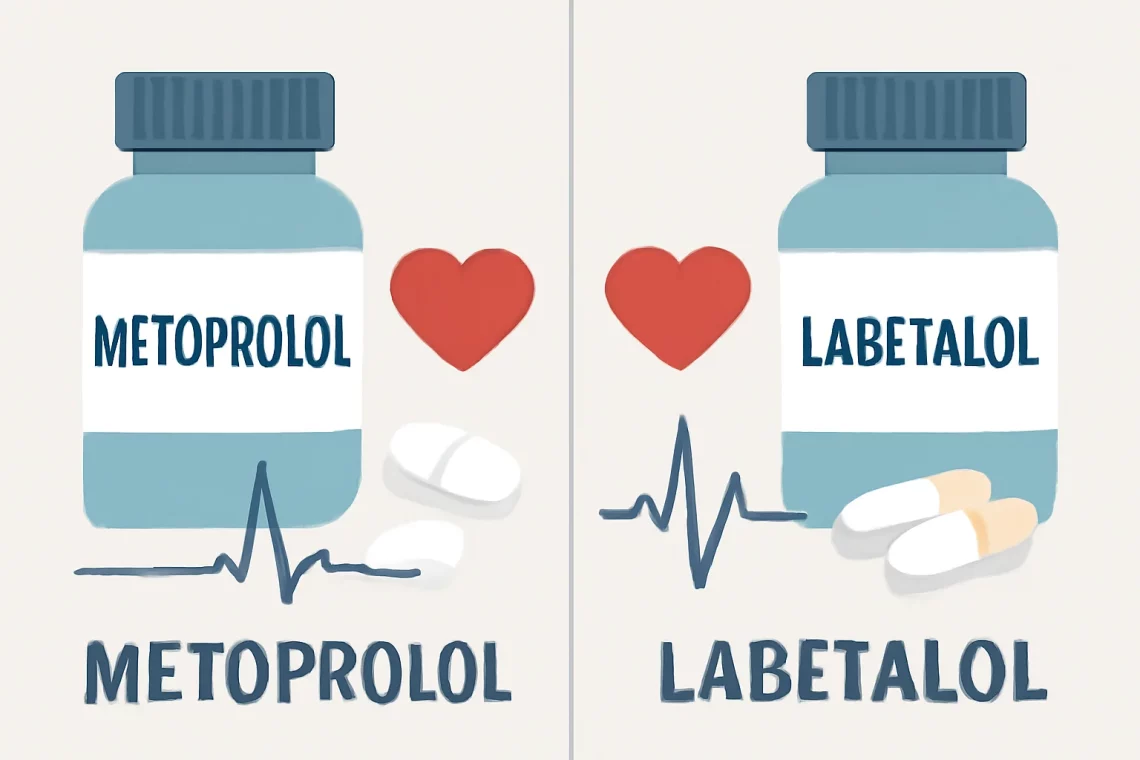-
Cephalexin vs Clindamycin: Which Antibiotic is Right for You?
Cephalexin and clindamycin are two antibiotics that are commonly prescribed for various bacterial infections. While both medications are effective in treating infections, they differ in their mechanisms of action, the types of bacteria they target, and their side effects. Understanding these differences is crucial for both healthcare providers and patients to ensure the appropriate antibiotic is chosen for a specific infection. In a world where antibiotic resistance is an increasing concern, selecting the right medication becomes even more vital. This article aims to delve into the characteristics of cephalexin and clindamycin, examining their uses, effectiveness, and potential side effects. By the end of this discussion, readers will have a clearer…
-
Amoxicillin vs Levaquin: Understanding Their Differences and Uses
Amoxicillin and Levaquin are two widely used antibiotics, each with distinct mechanisms of action and treatment applications. Understanding the differences between these medications is crucial for both healthcare providers and patients. Antibiotics play a vital role in combating bacterial infections, but their effectiveness can vary depending on the type of bacteria involved and the specific properties of the medication. Amoxicillin, a member of the penicillin class, is commonly prescribed for a variety of infections, including those affecting the respiratory tract and urinary system. It operates by inhibiting bacterial cell wall synthesis, leading to the death of susceptible bacteria. Levaquin, on the other hand, is a fluoroquinolone antibiotic that works by…
-
Azithromycin vs Erythromycin: Key Differences and Uses Explained
Azithromycin and erythromycin are two widely used antibiotics that belong to the macrolide class of medications. They are both effective in treating various bacterial infections by inhibiting bacterial protein synthesis, which ultimately leads to the death of the bacteria. Both drugs are commonly prescribed for respiratory tract infections, skin infections, and certain sexually transmitted infections, among others. Despite their similarities, there are significant differences between the two that can influence a physician’s choice of treatment. In clinical practice, understanding these differences is essential for selecting the appropriate antibiotic that will effectively target the infection while minimizing potential side effects. Factors such as bacterial resistance, patient tolerance, and specific infection types…
-
Terbinafine vs Itraconazole: Choosing the Right Antifungal Treatment
In the realm of antifungal treatments, two names frequently come up: terbinafine and itraconazole. Both medications are utilized to combat a range of fungal infections, yet they operate through different mechanisms and are indicated for varied conditions. As the prevalence of fungal infections continues to rise, understanding the nuances of these treatments becomes increasingly important. Terbinafine, primarily available in oral and topical forms, is known for its ability to effectively treat dermatophyte infections, particularly those affecting the skin and nails. On the other hand, itraconazole belongs to a broader class of antifungals and is effective against a wider variety of fungi, including certain endemic mycoses. The choice between these two…
-
Doxycycline vs Clindamycin: A Comprehensive Comparison of Antibiotics
Doxycycline and clindamycin are two widely used antibiotics that play crucial roles in the treatment of various bacterial infections. Each of these medications has unique mechanisms of action, indications, and side effects, making them suitable for different clinical scenarios. Understanding the distinctions between doxycycline and clindamycin can help patients and healthcare professionals make informed decisions regarding antibiotic therapy. As antibiotic resistance continues to pose a significant challenge in modern medicine, the appropriate selection of antibiotics is vital to ensure effective treatment while minimizing the risk of developing resistant strains of bacteria. With a comprehensive understanding of both medications, healthcare providers can tailor their prescriptions to the specific needs of their…
-
Doxycycline vs Levaquin: Key Differences and Uses Explained
Doxycycline and Levaquin are two antibiotics commonly prescribed to treat a variety of bacterial infections. Both medications have distinct mechanisms of action, efficacy profiles, and side effects, which can significantly influence their use in clinical settings. Understanding the differences between these two drugs is vital for healthcare professionals and patients alike when making informed decisions about treatment options. The choice between Doxycycline and Levaquin may depend on various factors, including the type of infection being treated, patient medical history, and potential drug interactions. Doxycycline, a tetracycline antibiotic, is effective against a broad spectrum of bacteria and is often utilized for infections such as acne, respiratory tract infections, and certain sexually…
-
Metoprolol vs Labetalol: Key Differences and Clinical Uses Explained
Metoprolol and labetalol are both beta-blockers, a class of medications widely used in the management of cardiovascular conditions. These drugs work by blocking the effects of adrenaline on the beta receptors in the heart, leading to reduced heart rate and blood pressure. While both medications serve similar purposes, they differ in their pharmacological profiles, indications, side effects, and mechanisms of action. Understanding these differences is crucial for healthcare providers and patients alike, as it can significantly impact treatment outcomes. Metoprolol is often prescribed for conditions such as hypertension, angina, and heart failure, while labetalol is frequently used for managing high blood pressure, particularly in acute settings. The choice between these…
-
Ciprofloxacin vs Levaquin: Understanding Their Differences and Uses
Ciprofloxacin and Levaquin are two widely used antibiotics, both belonging to the fluoroquinolone class of medications. These drugs are often prescribed to treat bacterial infections, ranging from urinary tract infections to respiratory conditions. Despite their similarities, each medication has its own unique characteristics, indications, and potential side effects. Understanding the differences and applications of Ciprofloxacin and Levaquin can help patients and healthcare providers make informed decisions about treatment options. While both medications target bacterial infections, they may vary in effectiveness depending on the type of bacteria involved and the severity of the infection. Furthermore, the choice between these antibiotics may also depend on the patient’s medical history, potential drug interactions,…
-
Topiramate vs Lamotrigine: Choosing the Right Treatment Option
The choice between topiramate and lamotrigine is an important consideration for individuals dealing with epilepsy, mood disorders, or other neurological conditions. Both medications play a significant role in managing seizures and stabilizing mood, yet they operate through different mechanisms and come with distinct profiles of efficacy and side effects. Understanding these differences is crucial for patients and healthcare providers alike, as it can impact treatment outcomes and overall quality of life. Topiramate, an anticonvulsant, is renowned for its efficacy in seizure control and is often prescribed for conditions like migraines and bipolar disorder. Lamotrigine, on the other hand, is primarily utilized for its mood-stabilizing properties, particularly in the treatment of…
-
Biktarvy vs Odefsey: A Comprehensive Comparison of HIV Treatments
In recent years, the landscape of HIV treatment has evolved significantly, offering patients a range of options tailored to their specific needs. With the rise of antiretroviral therapy, medications like Biktarvy and Odefsey have gained prominence for their effectiveness and convenience. As individuals living with HIV navigate their treatment journey, understanding the differences between these two regimens becomes crucial for making informed decisions. Both Biktarvy and Odefsey represent advanced formulations aimed at simplifying the treatment process, reducing pill burden, and improving adherence. These medications combine different classes of antiretroviral drugs to achieve viral suppression while minimizing side effects. As a result, patients are often left wondering which option might be…







































